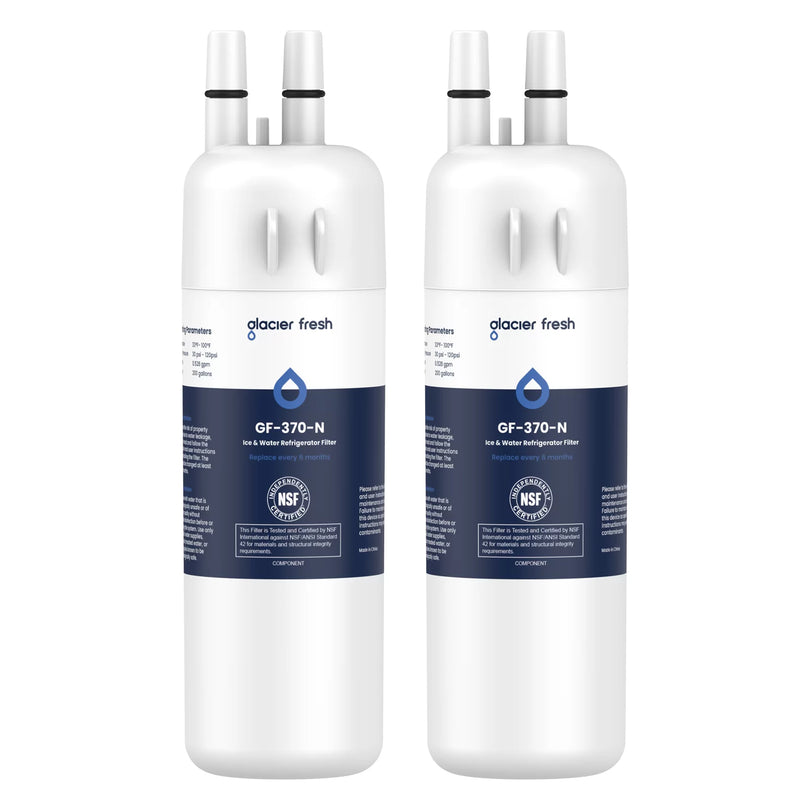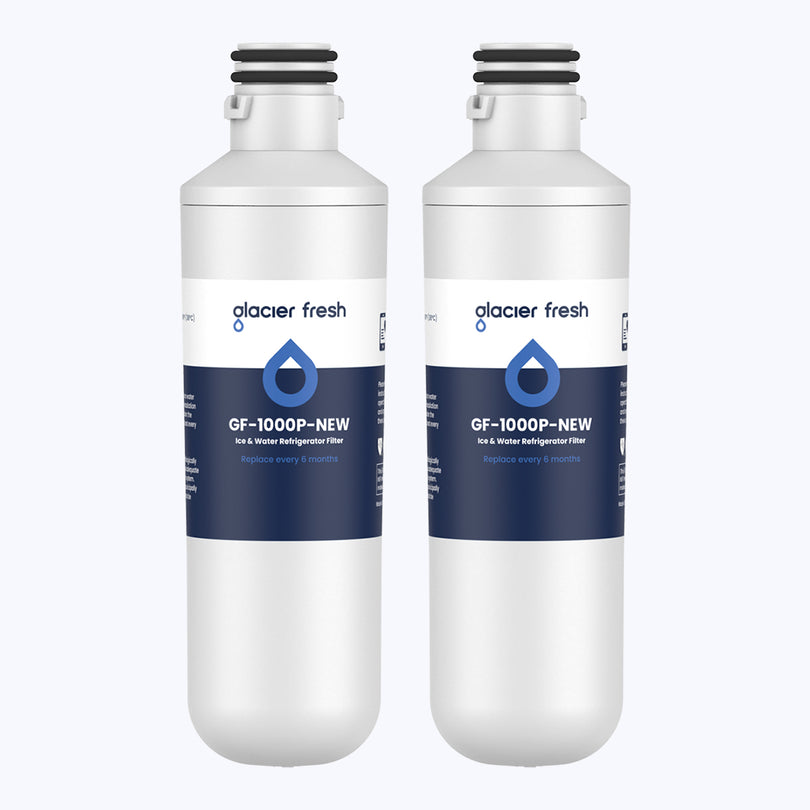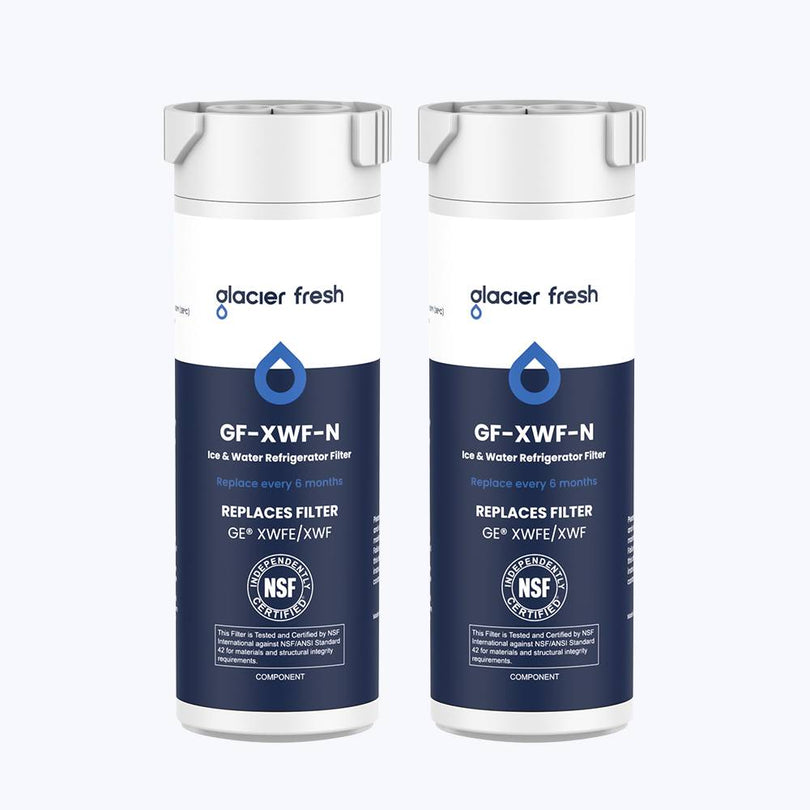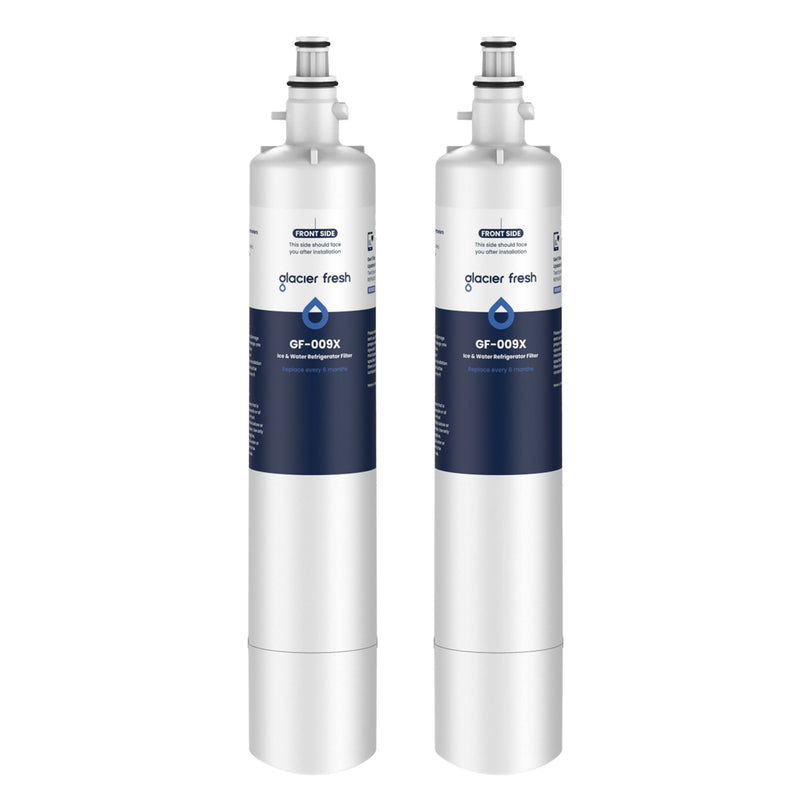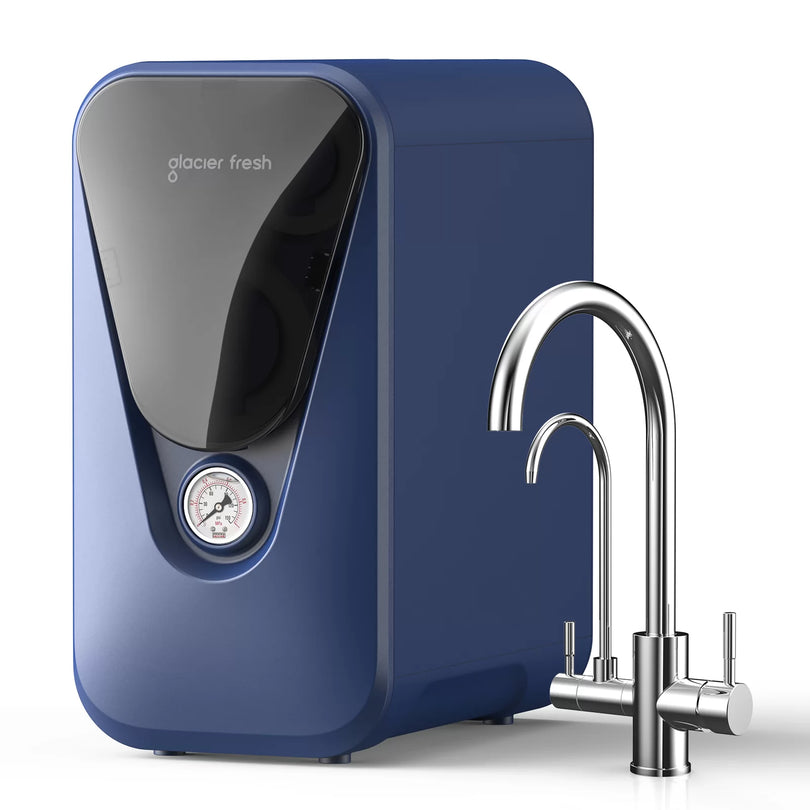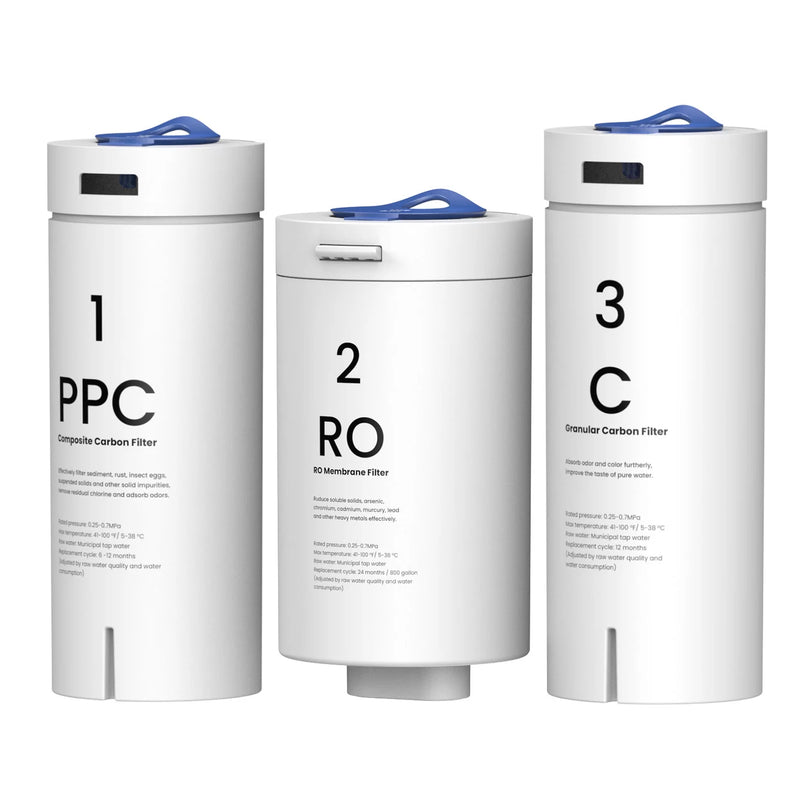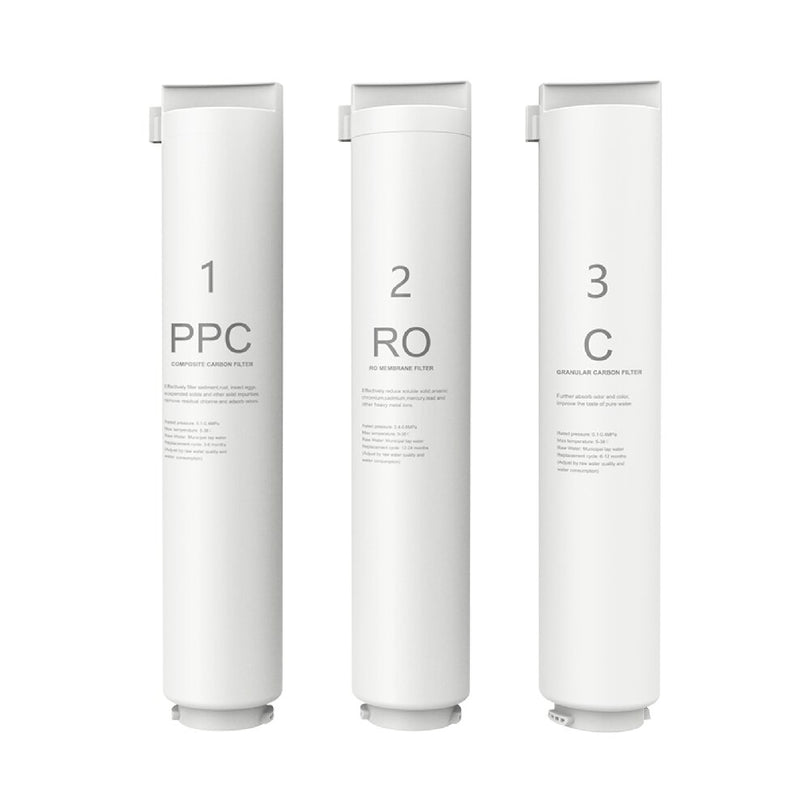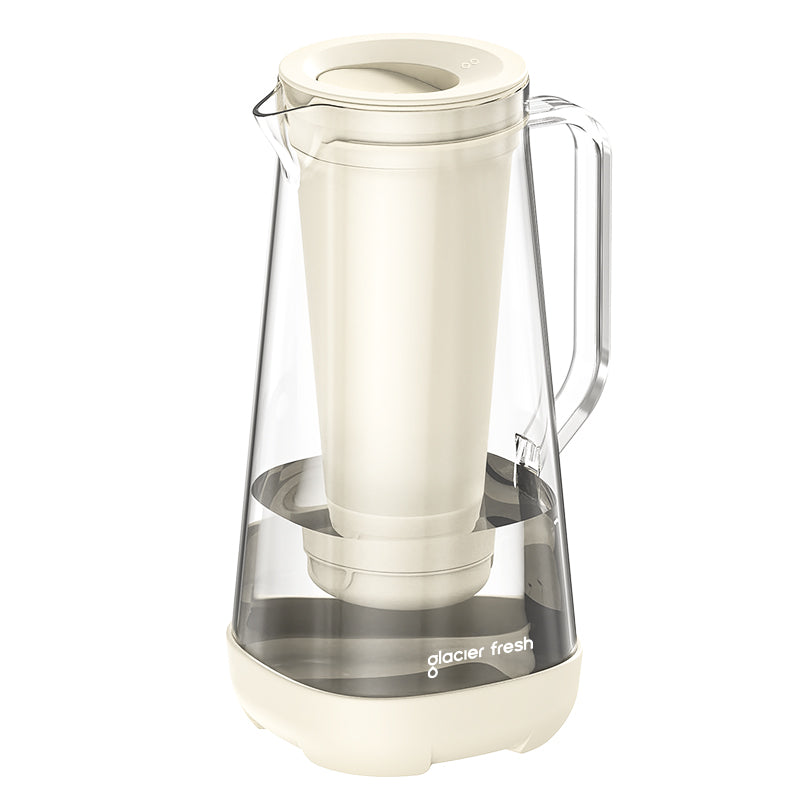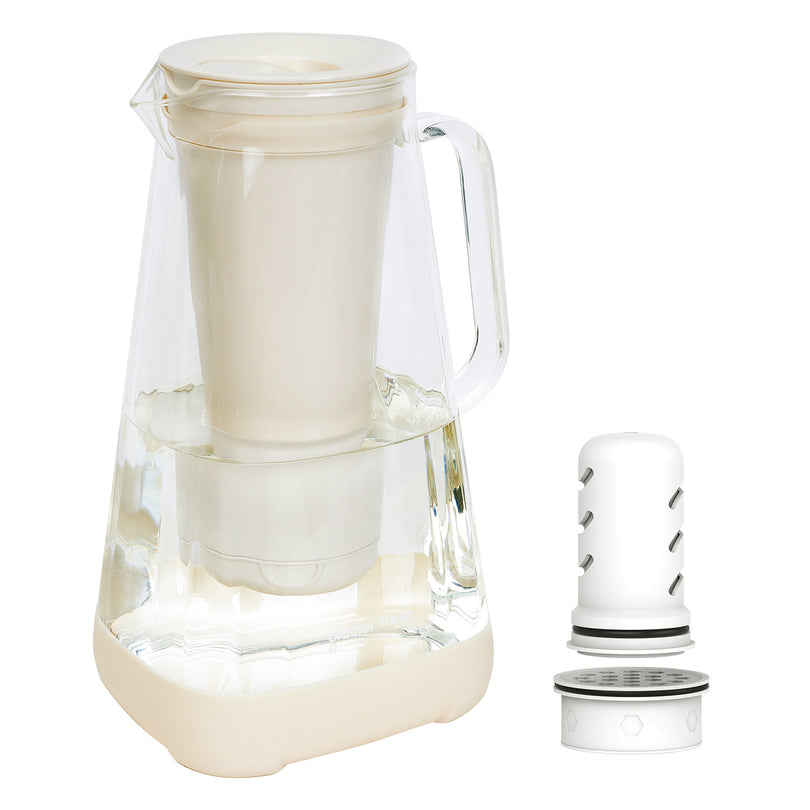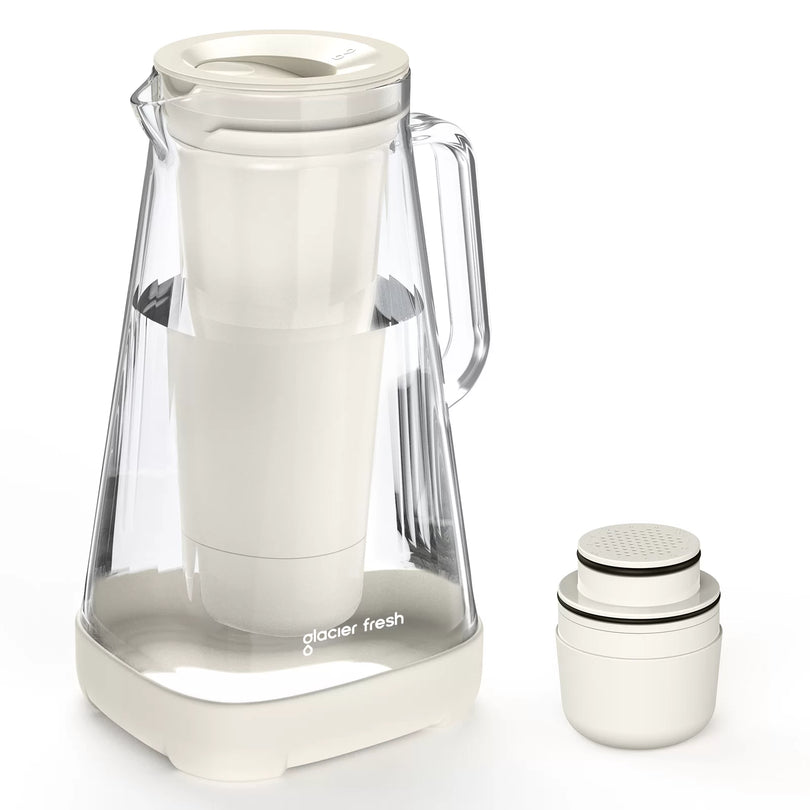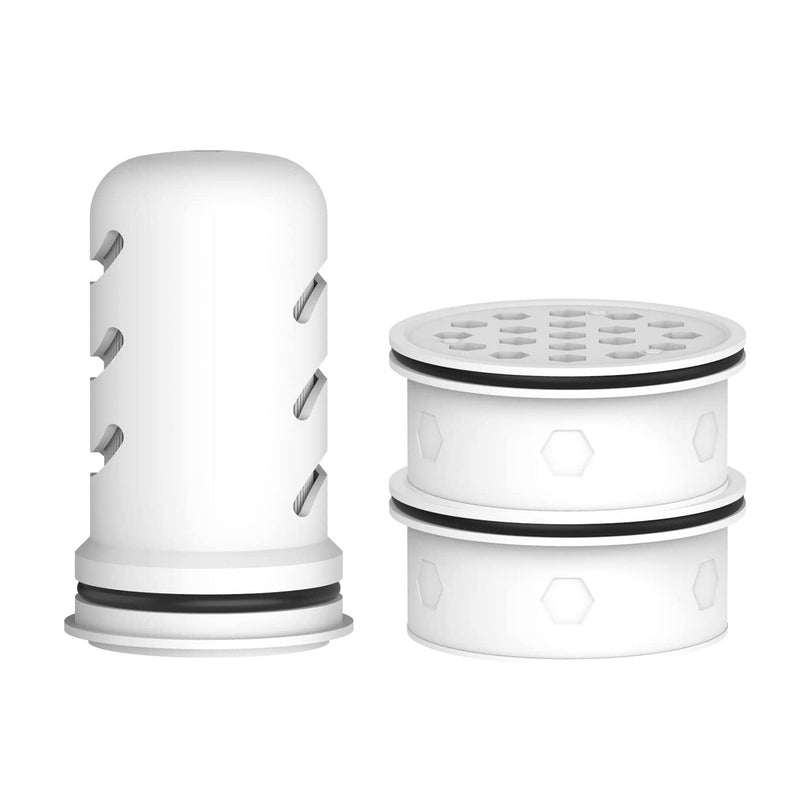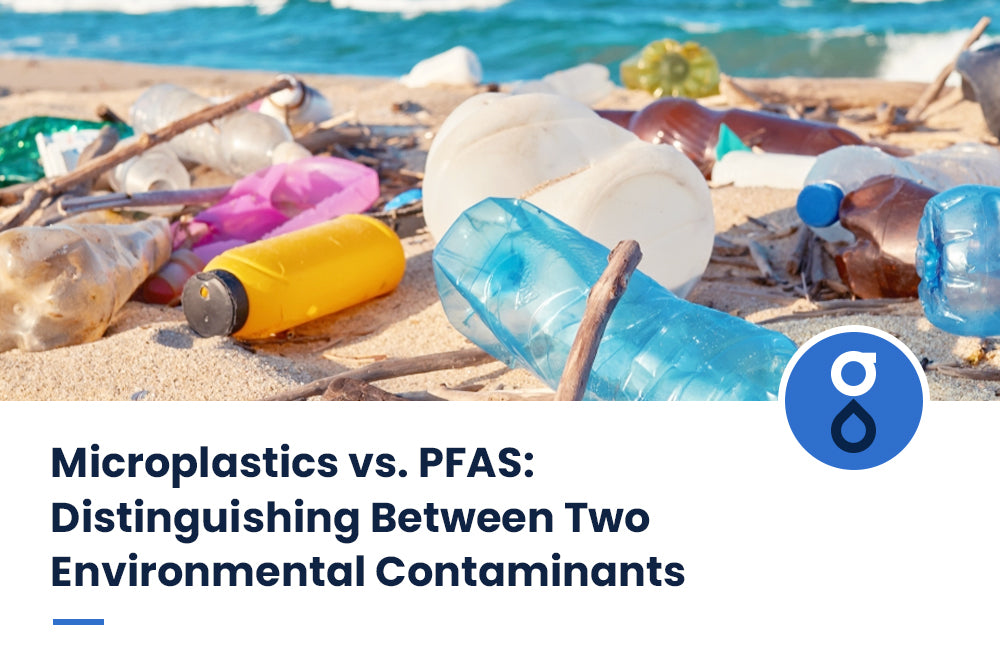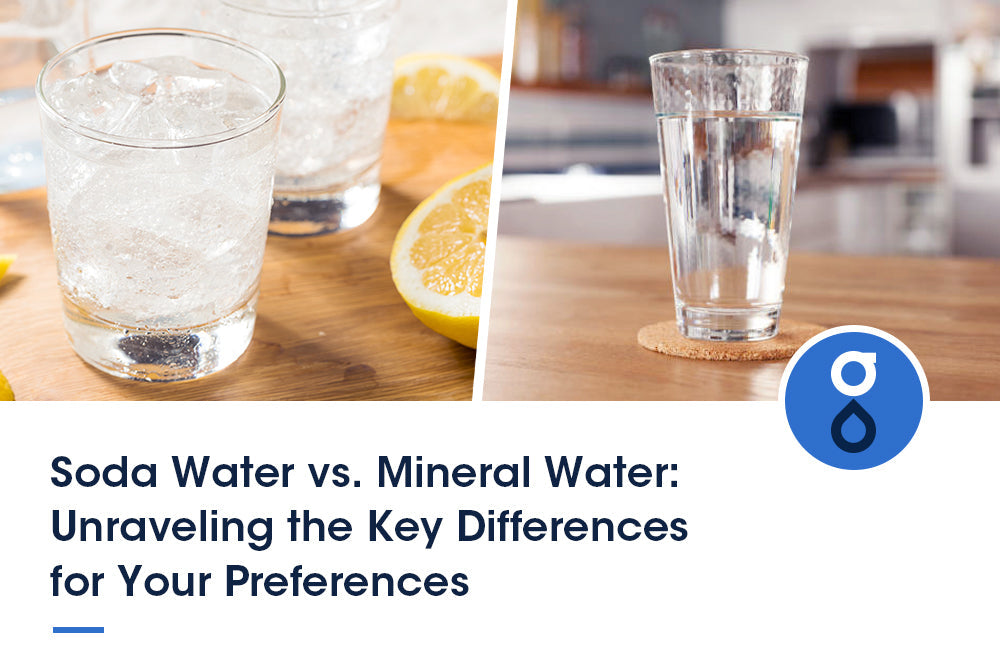Table of Contents:
Was ist Mikroplastik?
PFAS verstehen
Mikroplastik VS PFAS, was ist der Unterschied?
Mögliche Risiken von Mikroplastik und PFAS
Strategien zur Reduzierung von Mikroplastik und PFAS
FAQs
Abschluss
Kennen Sie den Unterschied zwischen Mikroplastik und PFAS? Diese beiden Umweltschadstoffe haben in den letzten Jahren für Schlagzeilen gesorgt, und es ist wichtig, ihre unterschiedlichen Eigenschaften und potenziellen Risiken zu verstehen. Mikroplastik sind winzige Plastikteilchen mit einer Länge von weniger als 5 Millimetern. Sie können aus verschiedenen Quellen stammen, darunter zerkleinerte übergroße Plastikgegenstände, Mikrokügelchen in Körperpflegeprodukten und Fasern aus synthetischer Kleidung.
PFAS (Per- und Polyfluoralkylsubstanzen) hingegen sind eine Gruppe künstlicher Chemikalien, die in einer Vielzahl von Produkten wie antihaftbeschichtetem Kochgeschirr, schmutzabweisenden Textilien und Feuerlöschschaum verwendet werden. Obwohl sie wertvolle Zwecke erfüllen, werden PFAS mit einer Reihe von Gesundheitsproblemen und Umweltbedenken in Verbindung gebracht. Wenn Sie die Unterschiede zwischen Mikroplastik und PFAS verstehen, können Sie fundierte Entscheidungen zur Reduzierung der Belastung mit diesen Schadstoffen treffen.
Was ist Mikroplastik?

Mikroplastik Mikroplastik ist ein winziges Plastikteilchen aus verschiedenen Quellen, darunter Kleidung, Verpackungen und Körperpflegeprodukte. Diese Kunststoffe sind weniger als fünf Millimeter groß und können leicht von Meereslebewesen aufgenommen werden. Sie kommen auch in vielen Lebensmitteln wie Fisch und Schalentieren sowie in unserem Trinkwasser vor. Es gibt zwei Arten von Mikroplastik: primäres und sekundäres Mikroplastik. Primäres Mikroplastik, wie beispielsweise Mikrokügelchen in Körperpflegeprodukten, wird direkt in die Umwelt freigesetzt.
Sekundäres Mikroplastik entsteht durch die Zersetzung größerer Plastikteile in kleinere Stücke. Unabhängig von ihrer Quelle schädigen beide Mikroplastikpartikel das Meeresleben und die Umwelt. Die Auswirkungen von Mikroplastik auf die menschliche Gesundheit werden noch untersucht, aber Untersuchungen haben gezeigt, dass sich diese winzigen Partikel im Körper ansammeln und potenziell Schaden anrichten können.
Neben den negativen Auswirkungen auf das Meeresleben und die Umwelt stellt Mikroplastik auch ein wachsendes Problem für die menschliche Gesundheit dar. Es ist wichtig, die Quellen von Mikroplastik im Auge zu behalten und Maßnahmen zu ergreifen, um unseren Kunststoffverbrauch insgesamt zu reduzieren.
PFAS verstehen

Obwohl sie möglicherweise nicht so weithin bekannt sind, handelt es sich bei PFAS um eine Klasse von Chemikalien, die eine erhebliche Gefahr für die menschliche Gesundheit und die Umwelt darstellen. PFAS (Per- und Polyfluoralkylsubstanzen) sind künstliche Chemikalien, die häufig in einer Vielzahl von Verbraucherprodukten verwendet werden, beispielsweise in antihaftbeschichtetem Kochgeschirr, schmutzabweisenden Möbeln und Kleidung sowie Feuerlöschschaum.
Trotz ihrer weit verbreiteten Verwendung sind PFAS dafür bekannt, schädliche Auswirkungen auf die menschliche Gesundheit zu haben, darunter ein erhöhtes Krebsrisiko, Leberschäden und Störungen des Immunsystems. Das Bewusstsein für PFAS ist in letzter Zeit gestiegen, da Studien Umweltverschmutzung und potenzielle Gesundheitsrisiken aufzeigten. PFAS können sich in Boden und Wasser anreichern und jahrzehntelang in der Umwelt verbleiben, was zu weitreichenden Verunreinigungen führt. Als Reaktion darauf wurden regulatorische Maßnahmen ergriffen, um die Verwendung bestimmter
PFAS-Chemikalien erfordern Tests und Überwachung der PFAS-Werte in Trinkwasser und anderen Umweltquellen. Da die Besorgnis über PFAS weiter zunimmt, suchen Industrie und Verbraucher nach sichereren chemischen Alternativen. Einige Unternehmen haben bereits damit begonnen, die Verwendung von PFAS in ihren Produkten schrittweise einzustellen, und Forscher erforschen alternative Chemikalien und Materialien, die die gleichen Vorteile ohne schädliche Auswirkungen bieten. Indem wir das Bewusstsein für PFAS schärfen und sicherere Alternativen fördern, können wir dazu beitragen, Expositionsrisiken zu reduzieren und unsere Gesundheit und die Umwelt zu schützen.
Mikroplastik VS PFAS, was ist der Unterschied?
Mikroplastik und PFAS sind Schadstoffe, die eine Gefahr für die Umwelt und die menschliche Gesundheit darstellen. Es gibt jedoch deutliche Unterschiede, die man richtig verstehen sollte.
Quellen und Anwendungen
Mikroplastik sind Kunststoffpartikel mit einer Größe von weniger als 5 mm, die aus verschiedenen Quellen stammen, beispielsweise aus dem Zerfall größerer Kunststoffe, der Kunststoffproduktion und sogar aus unserer Kleidung. PFAS (Per- und Polyfluoralkylsubstanzen) hingegen sind eine Klasse synthetischer Chemikalien, die in verschiedenen Industrie- und Verbraucherprodukten wie Feuerlöschschaum, Lebensmittelverpackungen und sogar wasserdichter Kleidung weit verbreitet sind.
Zusammensetzung und Eigenschaften
Mikroplastik besteht aus verschiedenen Kunststoffarten, darunter Polyvinylchlorid (PVC), Polyethylenterephthalat (PET) und Polystyrol. PFAS hingegen bestehen aus Kohlenstoff, Fluor und oft einigen weiteren Elementen. Aufgrund seiner Eigenschaften kann Mikroplastik mit anderen Chemikalien und Organismen in Gewässern interagieren.
Sie können auch hydrophobe Schadstoffe aufnehmen, was eine Gefahr für Meeresorganismen und sogar für Menschen darstellt, die kontaminierte Meeresfrüchte verzehren. PFAS-Verbindungen sind in der Umwelt sehr persistent und mobil, was ihre Entfernung aus Trinkwasserquellen erschwert. Die Belastung mit hohen PFAS-Konzentrationen wird mit verschiedenen gesundheitsschädlichen Auswirkungen in Verbindung gebracht, darunter Krebs, Leber- und Schilddrüsenerkrankungen sowie psychische Erkrankungen.
Umweltauswirkungen

Mikroplastik wurde in Ozeanen, Flüssen und sogar in der Luft, die wir atmen, gefunden. Meerestiere nehmen es auf, was zu Wachstumsstörungen, Fortpflanzungsproblemen und Tod führen kann. Mikroplastik kann auch in die Nahrungskette gelangen; auch der Mensch ist davon nicht ausgenommen. Studien haben gezeigt, dass Menschen Mikroplastik über Meeresfrüchte, Flaschenwasser und die Luft aufnehmen. Die langfristigen Auswirkungen des Mikroplastikkonsums müssen noch vollständig erforscht werden, aber es besteht Verbesserungsbedarf.
Andererseits gelten PFAS als „ewige Chemikalien“, da sie schwer abbaubar sind und jahrhundertelang in der Umwelt verbleiben können. Sie werden mit verschiedenen Gesundheitsproblemen wie Nieren- und Hodenkrebs, Schilddrüsenerkrankungen und Immunsystemproblemen in Verbindung gebracht. PFAS können auch Trinkwasser verunreinigen, und Schätzungen zufolge sind über 100 Millionen Amerikaner über ihr Trinkwasser PFAS ausgesetzt. Die Auswirkungen der PFAS-Verschmutzung beschränken sich nicht nur auf den Menschen, sondern können auch Wildtiere wie Fische, Vögel und sogar Eisbären betreffen.
Mögliche Risiken von Mikroplastik und PFAS
Mikroplastik birgt, vor allem aufgrund seiner geringen Größe, mehrere potenzielle Risiken für die Umwelt und aquatische Ökosysteme. Es kann von Meereslebewesen aufgenommen werden, was zu negativen Auswirkungen wie Wachstumsstörungen, Fortpflanzungsstörungen und sogar zum Tod führen kann. Darüber hinaus kann Mikroplastik giftige Chemikalien im Wasser adsorbieren und auf Meereslebewesen übertragen, die es konsumieren. Dadurch fungiert es als Träger für weitere Schadstoffe.
Ebenso können PFAS Risiken für die Umwelt und die menschliche Gesundheit darstellen, vor allem aufgrund ihrer Fähigkeit, lange im Hintergrund zu verbleiben und ihrer hohen Mobilität. Diese Stoffe können beispielsweise über Löschschaum in die Wasserversorgung gelangen und dann Trinkwasserquellen verunreinigen, was zu potenziellen gesundheitlichen Beeinträchtigungen wie Leberschäden, Entwicklungsverzögerungen und sogar Krebs führen kann.
Darüber hinaus können PFAS auch schädliche Auswirkungen auf die Tierwelt haben, einschließlich Meeres- und Wasserlebewesen. Studien haben beispielsweise gezeigt, dass die Exposition gegenüber PFAS die Immunreaktion von Meeressäugern wie Phocoena phocoena und Phocoenoides dalli beeinträchtigen kann. Die Aufnahme dieser Schadstoffe kann auf verschiedenen Wegen erfolgen, beispielsweise durch Kontakt mit Wasser, Nahrung und Luft.
Mikroplastik kann beispielsweise durch den Verzehr oder das Einatmen von Meeresfrüchten freigesetzt werden. PFAS hingegen kann durch die Aufnahme von kontaminiertem Trinkwasser oder den Kontakt mit farbigem Kunststoff freigesetzt werden. Sowohl Mikroplastik als auch PFAS sind Schadstoffe, die potenzielle Risiken für die menschliche Gesundheit und die Umwelt bergen. Indem wir ihre potenziellen Risiken verstehen und die Expositionswege reduzieren, können wir die negativen Auswirkungen dieser neuen Schadstoffe abmildern.
Strategien zur Reduzierung von Mikroplastik und PFAS
Umsetzung nachhaltiger Lebensstilentscheidungen

Um die Belastung mit Schadstoffen wie Mikroplastik und PFAS wirksam zu reduzieren, sollten Sie nachhaltige Lebensstile wie die Verwendung wiederverwendbarer Behälter oder Wasserfilter (z. B. Umkehrosmoseanlagen) , die Vermeidung von Einwegplastik und den Kauf natürlicher und ungiftiger Materialien in Betracht ziehen. Auch das Bewusstsein der Verbraucher ist entscheidend, um die Belastung mit diesen Stoffen zu reduzieren.
Untersuchungen zeigen, dass sich viele Menschen der potenziellen Risiken von Mikroplastik und PFAS nicht bewusst sind. Die Aufklärung der Verbraucher über die Gefahren dieser Substanzen und die Bedeutung nachhaltiger Entscheidungen kann die Nachfrage nach sichereren Produkten steigern.
Produkte neu gestalten und Abfallmanagement verbessern

Produktneugestaltung und Abfallmanagement sind wichtige Strategien zur Reduzierung der Belastung durch Mikroplastik und PFAS. Unternehmen können ihre Produkte so umgestalten, dass diese Stoffe nicht mehr verwendet werden. Viele Unternehmen verwenden beispielsweise pflanzliche Materialien anstelle von herkömmlichem Kunststoff. Auch ein ordnungsgemäßes Abfallmanagement ist entscheidend, um die Menge an Mikroplastik und PFAS in unserer Umwelt zu reduzieren. Die ordnungsgemäße Entsorgung von Produkten, die diese Stoffe enthalten, kann verhindern, dass sie in unsere Gewässer und unsere Nahrungskette gelangen.
Gesetze erlassen und wissenschaftliche Forschung betreiben
Um das Problem von Mikroplastik und PFAS anzugehen, sind auch gesetzgeberische Maßnahmen und wissenschaftliche Forschung erforderlich. Regierungen können Gesetze und Vorschriften erlassen, die die Verwendung dieser Substanzen in Produkten einschränken. Wissenschaftliche Forschung kann uns zudem helfen, die mit diesen Substanzen verbundenen Risiken besser zu verstehen und sicherere Alternativen zu entwickeln. Durch Zusammenarbeit können wir unsere Belastung mit Mikroplastik und PFAS reduzieren und eine sicherere und nachhaltigere Zukunft schaffen.
FAQs
Welche Auswirkungen haben Mikroplastik und PFAS auf die Meeresökosysteme?
Die Auswirkungen von Mikroplastik und PFAS auf marine Ökosysteme können schwerwiegende Folgen haben. Mikroplastik, winzige Plastikteilchen mit einer Größe von weniger als 5 mm, kann sich in der Nahrungskette anreichern und die Artenvielfalt schädigen. Aufgrund ihrer geringen Größe sind sie zudem nur schwer aus dem Meer zu entfernen und können Hunderte von Jahren in der Umwelt verbleiben.
PFAS hingegen ist eine Gruppe von Chemikalien, die in verschiedenen Verbraucherprodukten verwendet werden, toxische Auswirkungen auf Meereslebewesen haben und sich in der Nahrungskette anreichern können. Sie sind hochgradig persistent und können weite Strecken durch Luft und Wasser zurücklegen, was sie zu einem globalen Problem macht. Strategien zur Eindämmung von Mikroplastik und PFAS umfassen die Reduzierung der Verschmutzungsquellen und die Verbesserung der Abfallwirtschaft.
Können Mikroplastik und PFAS irgendwie recycelt oder wiederverwendet werden?
Wussten Sie, dass es sowohl für Mikroplastik als auch für PFAS Recyclingmöglichkeiten gibt? Obwohl das Recycling solch winziger Partikel schwierig erscheinen mag, entwickeln Unternehmen und Organisationen Möglichkeiten, sie aufzuwerten und wiederzuverwenden. Einige Unternehmen verwenden Mikroplastik beispielsweise zur Herstellung neuer Produkte wie Kleidung und Baumaterialien.
Darüber hinaus können PFAS in industriellen Prozessen, beispielsweise in der Halbleiterproduktion, wiederverwendet werden. Diese Kreislaufwirtschaftslösungen reduzieren nicht nur den Abfall, sondern tragen auch dazu bei, die negativen Auswirkungen von Mikroplastik und PFAS auf die Umwelt zu mildern. Wir können auf eine nachhaltigere Zukunft hinarbeiten, indem wir Strategien zur Abfallreduzierung umsetzen und innovative Wege zur Wiederverwendung dieser Materialien finden.
Gibt es Vorschriften zur Begrenzung der Verwendung von Mikroplastik und PFAS?
Aufgrund ihrer negativen Auswirkungen auf die Umwelt wurden Vorschriften erlassen, um die Verwendung von Mikroplastik und PFAS einzuschränken. Die Industrie ist dafür verantwortlich, Alternativen zu diesen Substanzen zu finden und sicherzustellen, dass sie nicht umweltschädlich sind.
Auch das Bewusstsein der Verbraucher hat dazu beigetragen, nachhaltigere und umweltfreundlichere Produkte zu fördern. Unternehmen müssen aktiv werden und den Einsatz dieser Stoffe reduzieren, um unseren Planeten zu schützen. Mit strengeren Vorschriften und einem Fokus auf Nachhaltigkeit können wir auf eine sauberere und gesündere Zukunft hinarbeiten.
Abschluss
Nachdem Sie nun sowohl Mikroplastik als auch PFAS besser verstehen, ist es wichtig, die damit verbundenen potenziellen Risiken zu berücksichtigen. Mikroplastik kann die Umwelt und die Tierwelt schädigen, in die Nahrungskette gelangen und die menschliche Gesundheit beeinträchtigen. Andererseits wird PFAS mit verschiedenen Gesundheitsproblemen wie Krebs und Fortpflanzungsstörungen in Verbindung gebracht. Um die Auswirkungen von Mikroplastik und PFAS zu reduzieren, können Sie verschiedene Strategien umsetzen.
Darüber hinaus können Sie die Belastung mit diesen schädlichen Chemikalien verringern, indem Sie PFAS-haltige Produkte meiden und sich für strengere Vorschriften einsetzen. Indem Sie gemeinsam mit Glacier Fresh handeln und bewusste Entscheidungen treffen, tragen Sie zum Schutz der Umwelt und Ihrer Gesundheit bei.

